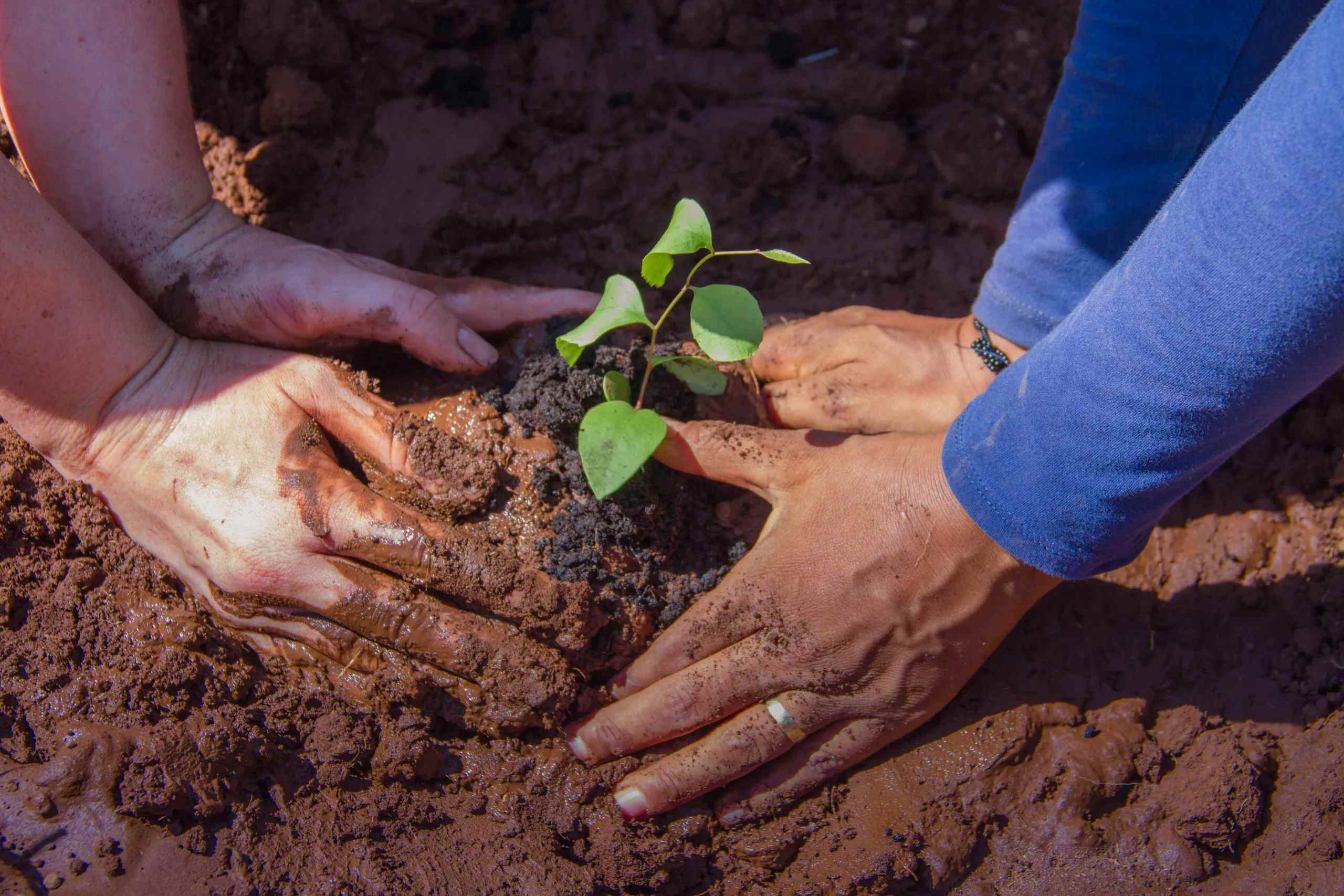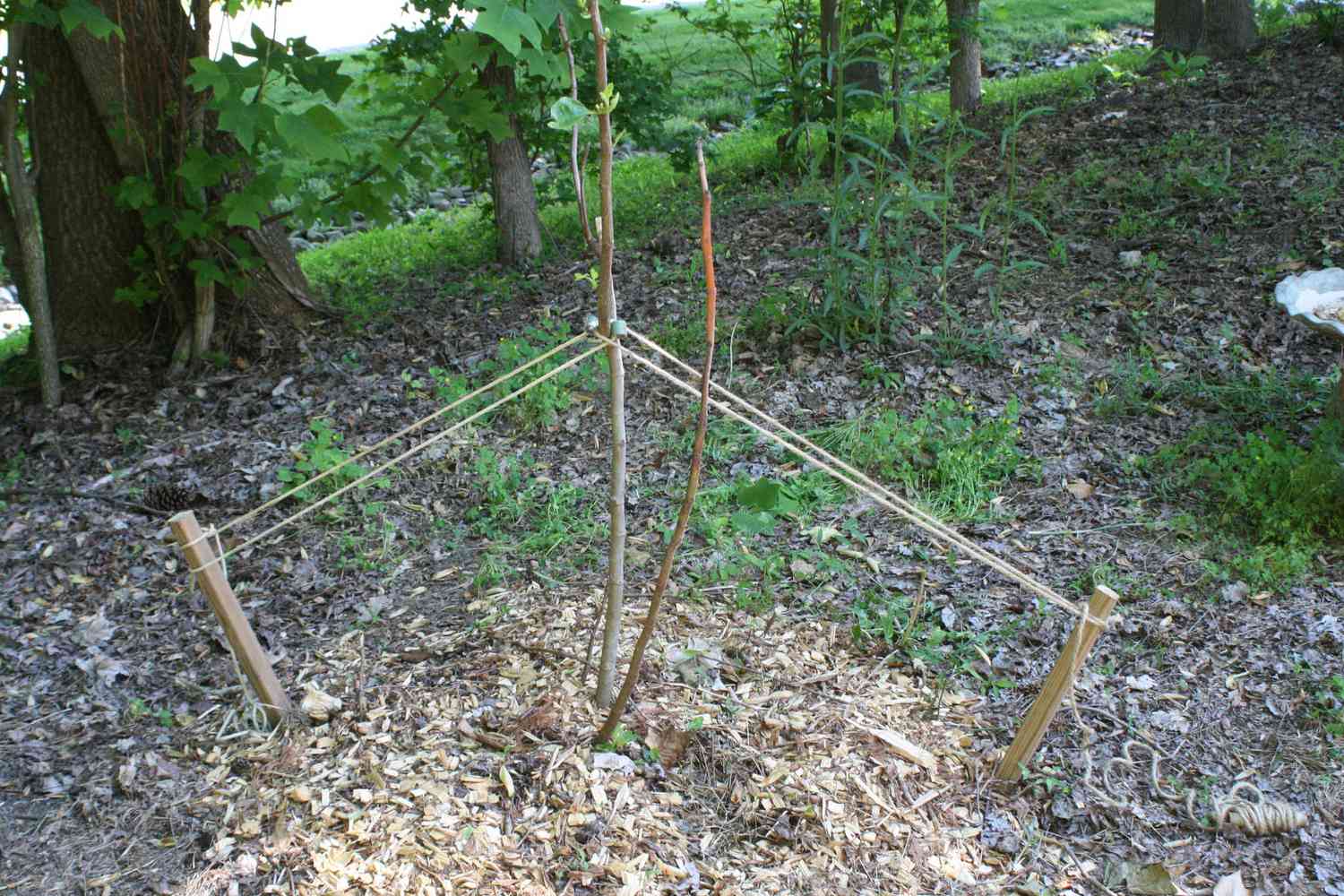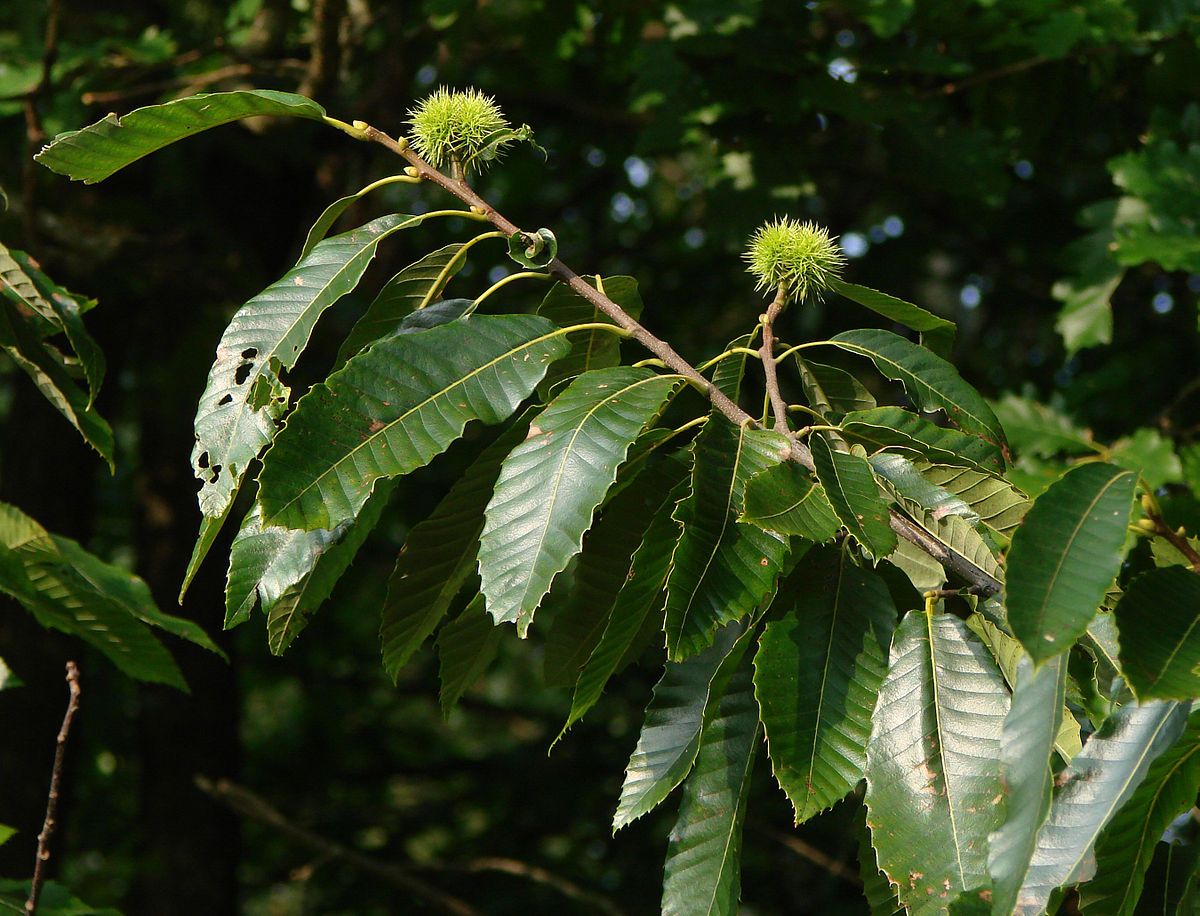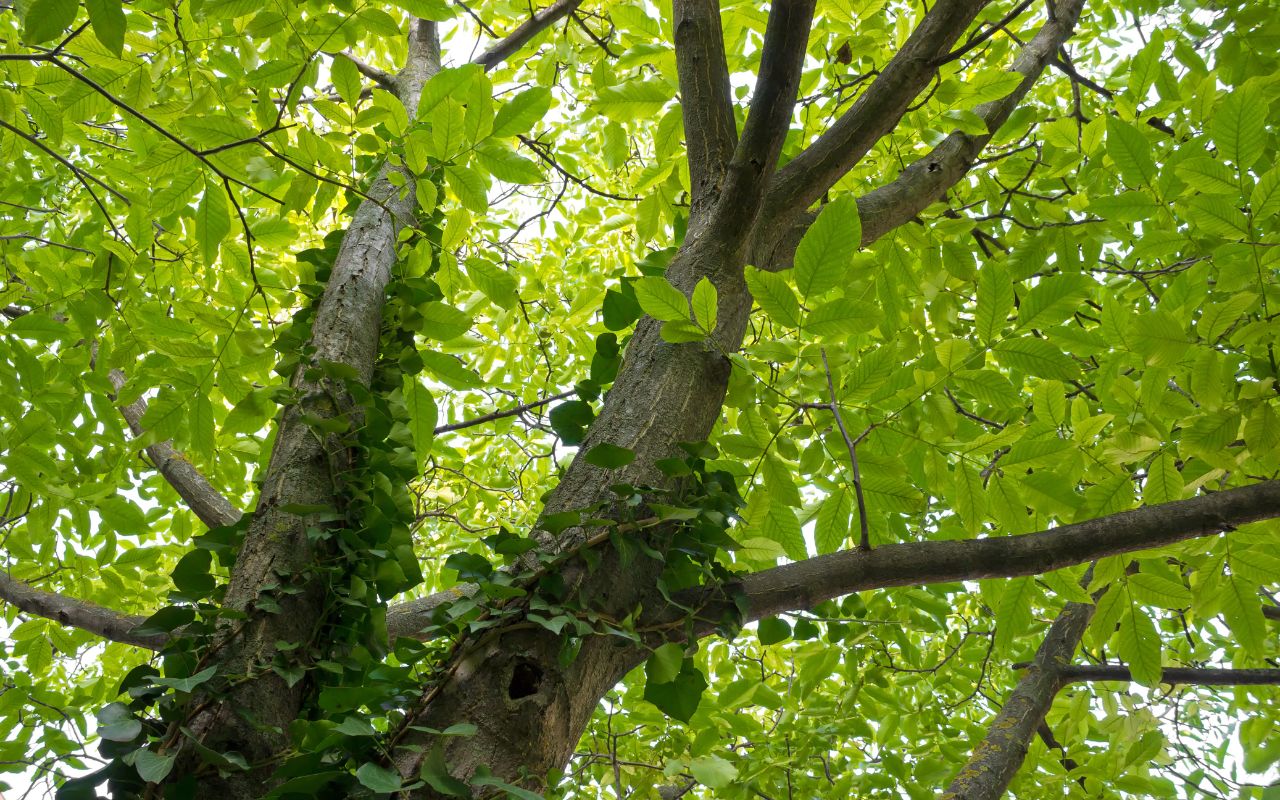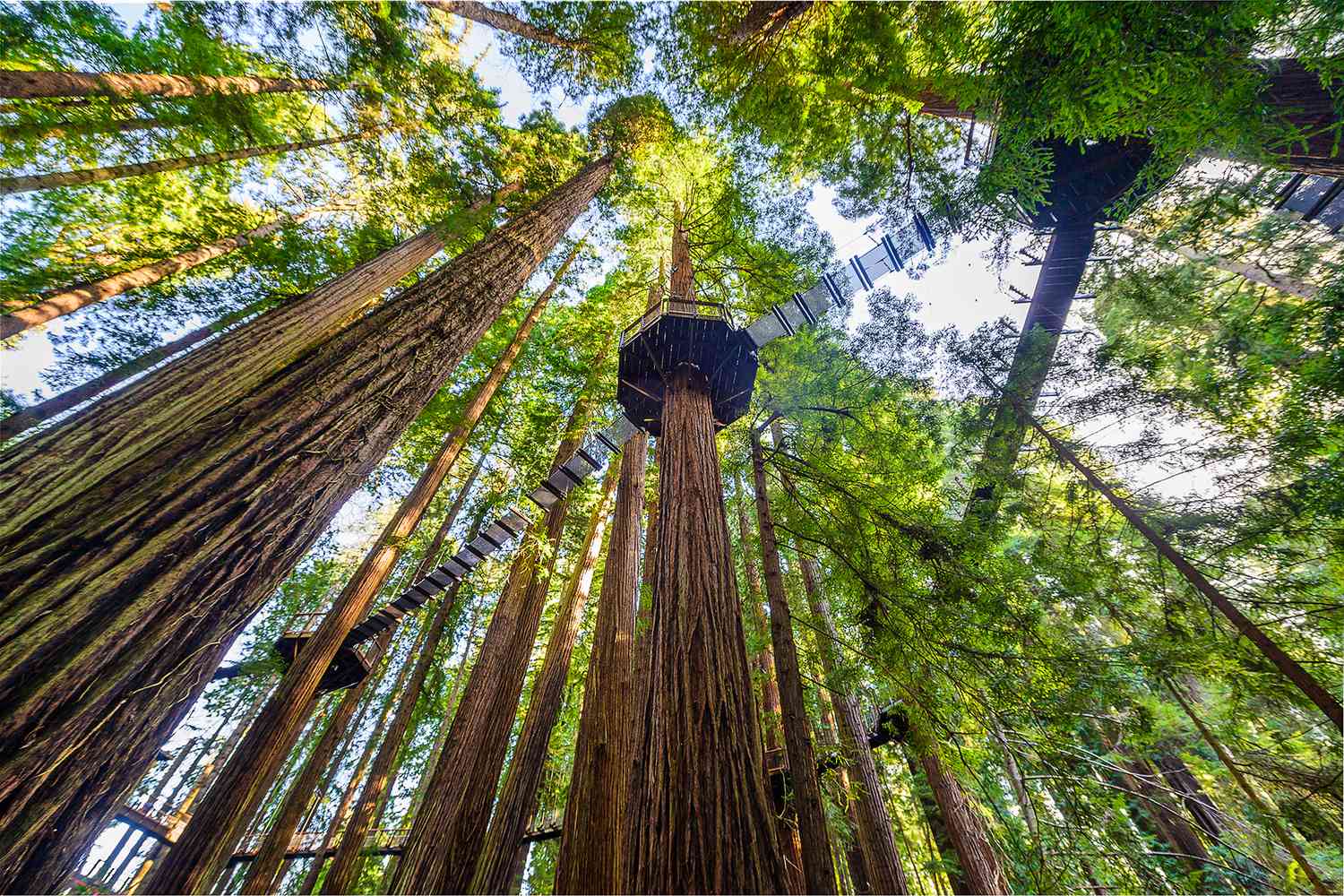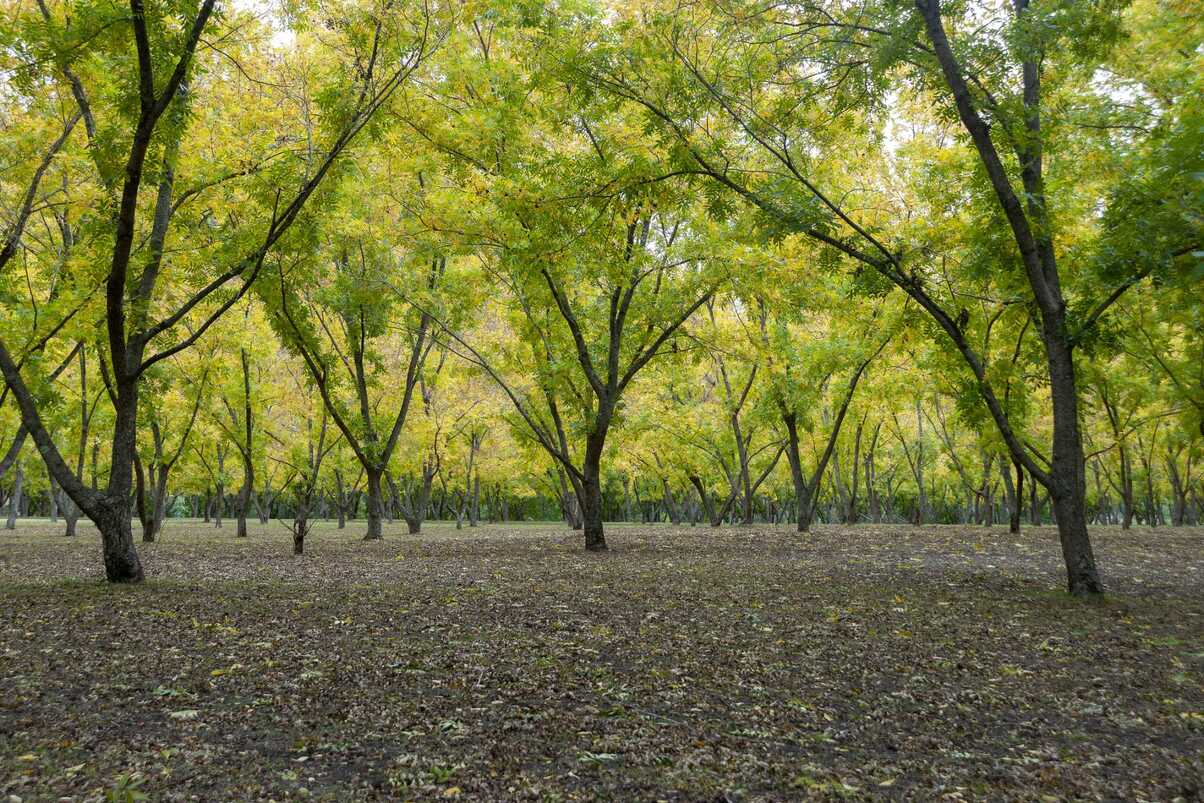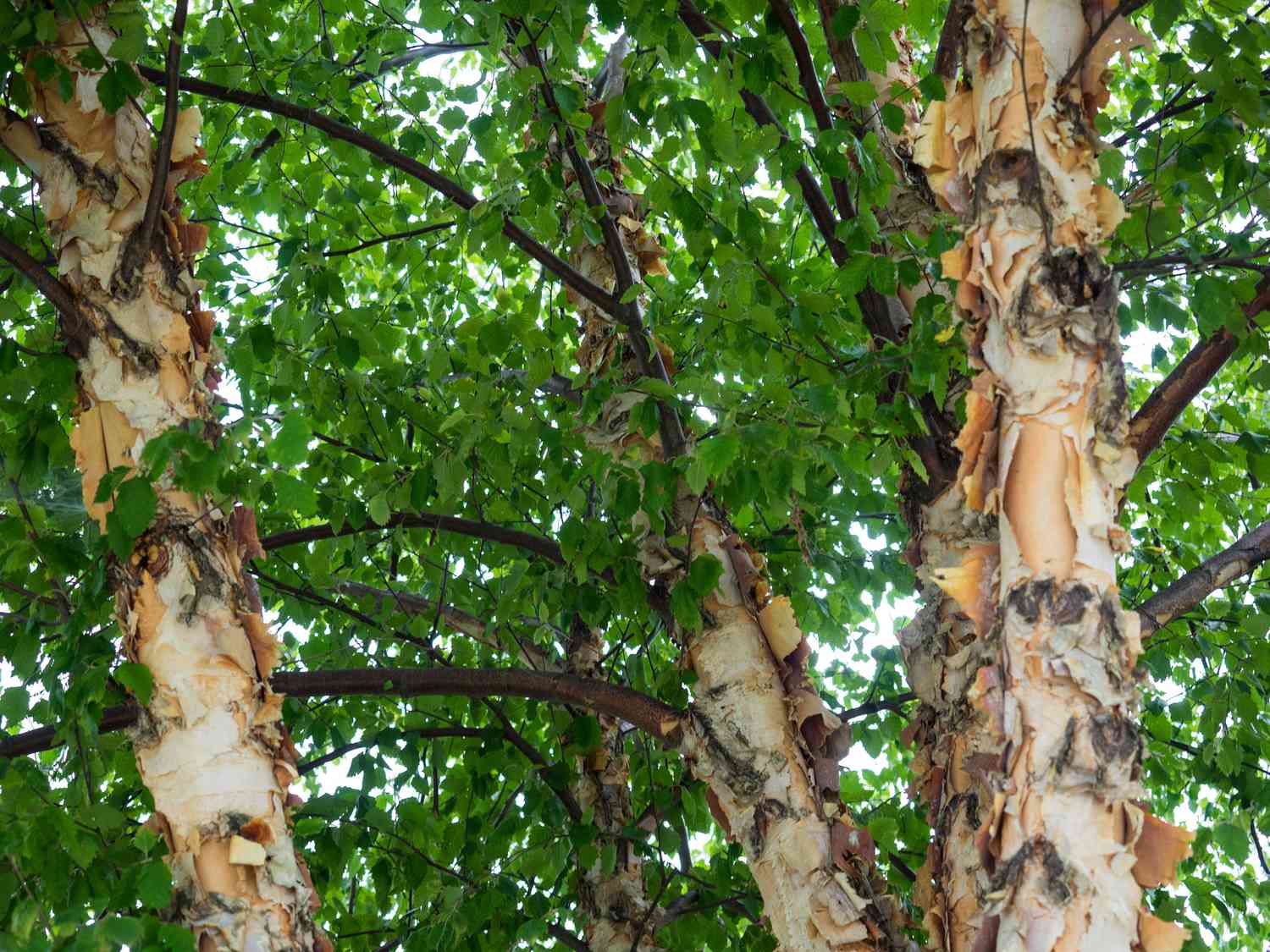Home>Gardening Techniques>Plant Care>How Old Are Trees


Plant Care
How Old Are Trees
Modified: January 22, 2024
Discover the secret to plant care and learn about the age of trees. Explore the fascinating world of tree growth and maintenance.
(Many of the links in this article redirect to a specific reviewed product. Your purchase of these products through affiliate links helps to generate commission for Chicagolandgardening.com, at no extra cost. Learn more)
Table of Contents
Introduction
Trees are not just living organisms that provide us with shade and oxygen – they are also ancient beings that have been around for thousands of years. Their age and longevity have always fascinated humans, leading to a quest to uncover their secrets. Determining the age of a tree is not a simple task, as it requires a combination of scientific methods and historical documentation.
Understanding the age of trees is essential for various reasons. It helps biologists and ecologists study the growth patterns and lifespans of different tree species, which in turn aids in conservation efforts and understanding the impact of climate change. Additionally, tree age can provide valuable insights into historical events, as some ancient trees have witnessed significant moments in human history.
In this article, we will explore the various factors that affect tree age and the methods used to determine it. We will delve into the science of growth rings, radiocarbon dating, tree ring dating, and increment borer sampling.
Furthermore, we will discuss the importance of historical documentation in estimating the age of trees. Written records, photographs, and accounts from early explorers and settlers have provided valuable information about the age of ancient trees.
Finally, we will explore some of the oldest and longest-living trees on Earth. These remarkable specimens have withstood the test of time, surviving for thousands of years in challenging environmental conditions.
So join us on this journey to unravel the mysteries of tree age. Let’s delve into the fascinating world of these majestic living beings and discover the stories hidden within their ancient trunks.
Factors Affecting Tree Age
The age of a tree is influenced by various factors, including the species, environmental conditions, and human activities. Understanding these factors is crucial to accurately determine the age of a tree. Let’s explore some of the key elements that can impact tree age.
Species: Different tree species have different lifespans. Some tree species, like bristlecone pines, have been known to live for thousands of years, while others may only live for a few decades. The genetic makeup and growth patterns of each species play a significant role in determining their maximum potential lifespan.
Environmental Conditions: The environment in which a tree grows greatly influences its age. Factors such as climate, soil conditions, and available resources can affect a tree’s growth rate and overall lifespan. Trees living in harsh conditions, such as deserts or high-altitude mountains, tend to have slower growth rates and longer lifespans, as they adapt to survive in challenging environments.
Human Activities: Human activities can impact the age of trees in several ways. Deforestation, logging, and land development can prematurely end the life of a tree. On the other hand, conservation efforts and protected areas can help preserve ancient trees and ensure their continued growth. Additionally, pollution and changes in land use can affect the health and longevity of trees.
Competition for Resources: Trees require essential resources like sunlight, water, and nutrients to grow and thrive. Competition with other trees for these resources can affect a tree’s growth rate and overall lifespan. In dense forests, where trees compete for limited resources, individual trees may have slower growth rates and shorter lifespans compared to trees in more open and resource-rich environments.
Disease and Pest Infestations: Trees are susceptible to various diseases and pest infestations, which can significantly impact their health and lifespan. Infections, such as fungal diseases or insect infestations, can weaken a tree’s immune system and make it more vulnerable to decline or premature death.
Natural Disasters: Natural disasters, such as wildfires, hurricanes, or floods, can have devastating effects on trees. These events can uproot or damage trees, leading to their demise. However, some tree species have evolved mechanisms to withstand or recover from natural disasters, enabling them to survive for extended periods.
By considering these factors, scientists and researchers can gain a better understanding of the age of trees and the conditions that contribute to their longevity. It is through this knowledge that we can develop effective strategies to preserve and protect these ancient beings for future generations to appreciate and learn from.
Methods for Determining Tree Age
Determining the age of a tree is a fascinating scientific endeavor that involves the use of various methods and techniques. By examining different aspects of a tree’s anatomy and historical records, researchers can estimate its age with reasonable accuracy. Let’s explore some of the most commonly used methods for determining tree age:
Growth Rings: One of the most reliable methods for estimating a tree’s age is by studying its growth rings. Each year, a tree forms a new ring of growth, consisting of a lighter-colored, earlywood portion and a darker-colored, latewood portion. By counting these rings, scientists can determine the age of the tree. However, this method is only effective for living or recently harvested trees, as the rings can become indistinguishable as the wood ages.
Radiocarbon Dating: Radiocarbon dating is a technique used to determine the age of organic materials, including tree wood or charcoal. It relies on the decay of the radioactive isotope carbon-14, which is present in the atmosphere and absorbed by living organisms. By measuring the ratio of carbon-14 to carbon-12 in a sample, scientists can estimate the age of the material. Radiocarbon dating is particularly useful for dating very old or archaeological wood.
Tree Ring Dating: Tree ring dating, also known as dendrochronology, is a method that uses the patterns of growth rings in trees to determine their age. By comparing the growth patterns of living trees with historical tree ring sequences, scientists can extend the dating back in time. This method is especially useful for dating wooden artifacts or structures, as it provides a precise timeline of growth and can even reveal information about climate conditions during the tree’s lifespan.
Increment Borer Sampling: Increment borer sampling involves extracting a small core sample from the trunk of a tree. This sample contains multiple growth rings that can be counted and analyzed to estimate the tree’s age. Increment borer sampling is a non-destructive method, as the core hole can be plugged and does not pose a significant risk to the tree’s health. It is commonly used for studying tree growth patterns and conducting research on tree age.
Historical Documentation: In some cases, historical documentation can provide valuable information about the age of a tree. Photographs, diaries, and written records from early explorers, settlers, or historians may mention or depict specific trees, providing a clue to their age. While this method may have limitations, it can offer insights into the age of trees that have witnessed historical events or have significant cultural and historical value.
By employing these methods and combining various lines of evidence, researchers can gain a comprehensive understanding of tree age. Each method contributes its unique perspective, allowing for more accurate estimates and a deeper appreciation of the ancient living beings that grace our planet.
Growth Rings
Growth rings, also known as annual rings or tree rings, provide valuable information about a tree’s age and growth patterns. Each year, a tree forms a new ring of growth, which can be observed by cross-sectionally examining the trunk or a tree core sample. These rings can reveal important insights into a tree’s life history and environmental conditions. Let’s delve into the fascinating world of growth rings and how they help in determining tree age.
Growth rings are formed due to the alternation of seasons. During the growing season, typically in the spring and summer, tree growth is active, and the tree produces larger, lighter-colored cells known as earlywood. In contrast, during the dormant season, usually in the fall and winter, growth slows down, resulting in smaller, darker-colored cells known as latewood. This growth pattern creates a visible distinction between the rings when examined closely.
Counting the growth rings can provide a reliable estimate of a tree’s age. Each ring represents one year of growth, allowing scientists to determine the number of years a tree has been alive. However, it’s important to note that growth rings may become indistinguishable in older trees or trees from certain species where the rings are not well-defined.
Aside from age determination, growth rings can also provide insight into a tree’s growth rate and environmental conditions. The width of growth rings can indicate periods of favorable or unfavorable growing conditions. Wide rings typically correspond to years with abundant resources like water and sunlight, indicating optimal growth conditions. In contrast, narrow rings may suggest years of drought, nutrient limitations, or other stressors that resulted in reduced growth.
Furthermore, growth rings can also provide information about climate patterns. By analyzing the width, density, and composition of growth rings, researchers can reconstruct past climate conditions, such as temperature and precipitation. This field of study, known as dendroclimatology, helps scientists understand long-term climate variations and compare them to modern climate data.
Growth rings are not only valuable for living trees, but they also play a crucial role in dating ancient wood found in archaeological sites or historical artifacts. By comparing the growth ring patterns of ancient wood samples with living tree ring sequences, scientists can determine the age of wooden structures or artifacts and gain insights into past human activities.
Overall, growth rings are a remarkable natural archive that enables scientists to unlock the secrets of tree age, growth patterns, and past environmental conditions. Their study contributes to our understanding of the complex relationship between trees and their ecosystems, and how they adapt and respond to changing environmental factors over time.
Radiocarbon Dating
Radiocarbon dating is a powerful technique used to determine the age of organic materials, such as tree wood, charcoal, or other carbon-based plant remains. It relies on the natural decay of the radioactive isotope carbon-14, also known as radiocarbon, which is present in the Earth’s atmosphere.
All living organisms, including trees, absorb carbon dioxide from the atmosphere during photosynthesis. This includes both the stable carbon-12 isotope and a tiny amount of radioactive carbon-14. While the carbon-12 remains constant over time, the carbon-14 gradually decays at a predictable rate.
When a plant or tree dies, it no longer absorbs carbon dioxide from the atmosphere, and the carbon-14 in its cells begins to decay. By measuring the ratio of carbon-14 to carbon-12 in a sample, scientists can estimate the time that has elapsed since the death of the organism.
Radiocarbon dating relies on the assumption that the atmospheric carbon-14 levels have remained relatively constant over time. This is justified by calibration against other dating methods and historical records. However, fluctuations in carbon-14 levels due to solar activity or other factors can introduce some uncertainties into the dating process.
The radiocarbon dating method is particularly useful for estimating the age of very old or archaeological wood. By analyzing the carbon-14 content in a sample and comparing it to the atmospheric reference curve, scientists can determine the approximate age of the material. The technique has been crucial in dating ancient trees, archaeological wooden artifacts, and even human remnants found in bogs or other preserved environments.
It’s important to note that radiocarbon dating provides the age of the material at the time of death or cessation of carbon exchange. In the case of tree wood, this may not always align perfectly with the age of the entire tree, as the outermost layers may have been incorporated into the tree at a later stage. Thus, radiocarbon dates obtained from tree material may be slightly younger than the actual age of the tree itself.
Overall, radiocarbon dating has revolutionized the field of archaeology and contributed significantly to our understanding of the past. By using this method, scientists can accurately date ancient trees and other organic materials, shedding light on historical events, human activities, and the intricate connection between plants, animals, and the environment throughout time.
Tree Ring Dating
Tree ring dating, also known as dendrochronology, is a method used to determine the age of a tree by analyzing its growth rings. This technique relies on the fact that trees form a new ring of growth each year, resulting in a distinct pattern of rings that can be observed in a cross-section of the tree trunk or in core samples.
The process of tree ring dating involves comparing the growth patterns of living trees with historical tree ring sequences. By matching the patterns of overlapping rings, scientists can extend the dating back in time and establish a chronological sequence of tree ring patterns for a specific region.
Tree ring dating is based on several key principles. First, trees in a given area will respond similarly to environmental conditions, resulting in similar growth patterns. Second, the growth rate of a tree can vary from year to year depending on factors such as climate, soil moisture, and competition with other trees. Third, the pattern of wide and narrow rings allows for the identification of specific years.
Scientists create master tree ring chronologies by collecting samples from living trees and cross-referencing them with historical records, archaeological wood samples, or wood remnants in old structures. These master chronologies serve as a reference for dating purposes.
When identifying the age of a tree, scientists measure the width and characteristics of each growth ring and compare them to the master chronology. By counting the rings and matching the growth patterns, they can determine the age of the tree. Additionally, tree ring dating can provide valuable insights into the climate or environmental conditions during the tree’s lifespan.
Tree ring dating extends far beyond the age determination of individual trees. The technique has been critical in dating historical artifacts, such as wooden structures, furniture, and even artworks. By analyzing the growth rings of these objects and matching them to the master chronology, researchers can establish the approximate time of their creation.
Furthermore, tree ring dating has contributed to the field of climate science. By studying the width and characteristics of tree rings on a regional or global scale, scientists can reconstruct past climate conditions and understand long-term climate patterns. These datasets offer valuable information for studying climate change and provide context for modern climate observations and models.
Overall, tree ring dating is a powerful tool that allows scientists to determine the age of trees, date historical artifacts, and reconstruct past climate variations. It provides a fascinating glimpse into the history of our planet and helps us understand the relationships between trees, climate, and human activities throughout time.
Increment Borer Sampling
Increment borer sampling is a common method used to determine the age of trees without causing significant harm to them. This technique involves extracting a small core sample from the trunk of a tree using an increment borer, a specialized tool designed for this purpose.
The increment borer is a hollow tube with a hollow or solid bit on one end and a handle on the other end. The borer is carefully inserted into the tree, and a section of the core, typically 5-10 millimeters in diameter, is extracted. This core sample contains multiple growth rings that can be counted and analyzed to estimate the age of the tree.
Increment borer sampling is a non-destructive method that minimizes damage to the tree. The hole created by the borer is relatively small and can be plugged, allowing the tree to heal naturally. The extraction of the core sample does not pose a significant risk to the tree’s health, especially when conducted by experienced researchers who take proper precautions.
One advantage of the increment borer sampling method is that it can be used on both living and dead trees. For living trees, cores are typically extracted from the lower portion of the trunk, where the growth rings are easily accessible. For deceased trees, cores can be obtained from various parts of the trunk, including the base, middle, or even branches.
The extracted core sample is carefully examined under a microscope or magnifying lens to count the growth rings. Researchers look for distinct changes in color and width as well as any anomalies that may be present, such as scars or injuries. By counting the rings, scientists can estimate the age of the tree.
Increment borer sampling provides valuable information not only about the age of a tree but also about its growth rate and growth patterns throughout its life. From the analysis of the core sample, scientists can study the variations in growth, including periods of rapid growth and years when growth slowed due to environmental conditions or other factors.
Researchers can also analyze the density and composition of the growth rings in the core sample. This analysis can provide insights into past environmental conditions, such as droughts, severe weather events, or changes in nutrient availability, aiding in the understanding of the tree’s response to its surroundings over time.
Increment borer sampling is widely used in tree research and forestry studies. It allows for the collection of valuable data without causing significant harm to the tree, making it a valuable tool for understanding the age, growth patterns, and environmental history of trees.
Historical Documentation
Historical documentation plays a significant role in estimating the age of trees, especially for ancient or culturally significant specimens. Written records, photographs, and accounts from early explorers, settlers, or historians offer valuable information about the age and historical context of specific trees.
Photographs can provide visual evidence of the existence of a tree at a particular point in time. Historical photographs often include landmarks, such as buildings or people, that can help date the image. By comparing the photograph to the current state of the tree and its surroundings, researchers can estimate the age of the tree and track its growth over time.
Diaries, journals, or other written records may mention or describe significant trees, providing insights into their age. Early accounts from explorers or settlers often included observations and descriptions of notable trees, especially those with unique characteristics or immense size. These accounts can offer valuable clues to the age and growth patterns of specific trees.
In some cases, historical documentation may also include measurements or estimates of the tree’s dimensions. These measurements can help corroborate tree ring data or provide additional data points for age estimation. Descriptions of tree circumference, height, or branching patterns can be useful in determining the growth rate and age of the tree.
Furthermore, historical documentation can provide valuable information about the cultural or historical significance of certain trees. Trees associated with notable events, individuals, or traditional practices may have been specifically documented, allowing researchers to piece together a timeline of their existence and role in the community.
It is important to note that historical documentation may have limitations and discrepancies. The accuracy of records can vary depending on the reliability and detail provided by the sources. Additionally, records may not exist for every tree or have been lost over time due to various reasons.
However, when combined with other methods of age estimation, historical documentation can provide a unique and insightful perspective on the age and significance of trees. It allows researchers to connect past human activities, events, and cultural practices with the lifespan of trees, creating a more comprehensive understanding of our natural and historical heritage.
By considering historical documentation alongside scientific methods, researchers can contribute to the preservation and appreciation of ancient trees, ensuring that their stories are not lost to time and that their value as living witnesses to history is recognized.
Other Methods for Estimating Tree Age
In addition to growth rings, radiocarbon dating, tree ring dating, increment borer sampling, and historical documentation, scientists and researchers have developed various other methods for estimating the age of trees. These methods provide additional insights and can be used in combination with other techniques to refine age estimates. Let’s explore some of these alternative methods:
Size and Growth Rate: The size and growth rate of a tree can provide clues about its age. While this method is not as precise as others, larger and older trees generally have a slower growth rate compared to younger trees of the same species. By measuring the diameter, height, or overall size of a tree, researchers can estimate its age within a certain range.
Genetic Techniques: Genetic techniques based on DNA analysis can be used to estimate tree age. By studying the genetic makeup of a tree or its offspring, scientists can determine the age of a tree or calculate the time of divergence from a common ancestor. However, this method is still under development and is not widely used at present.
Stump Analysis: Stump analysis involves examining the remains of a tree stump after it has been cut down or removed. The rings and growth patterns visible in the stump can provide information about the tree’s age. While this method is primarily used for estimating the age of felled or lost trees, it can still be valuable in certain contexts.
Soil Analysis: Soil analysis can provide insights into the age of trees indirectly. By studying the soil in which a tree grows, researchers can examine layers corresponding to previous growth or disturbance events, such as fires or floods. These layers can be correlated with historical records or known events to estimate a tree’s age. However, this method is less precise than direct methods like tree ring dating.
Laser Technology: Advancements in laser technology have enabled researchers to assess the age of trees without invasive sampling. Laser scanning or LiDAR (Light Detection and Ranging) can accurately measure the dimensions and structure of trees, which, when combined with growth models, can estimate their age. This technology is particularly useful for studying large or inaccessible trees.
Genomic Analysis: Genomic analysis involves studying the DNA sequences or genomes of trees to estimate their age. By analyzing specific genetic markers or mutations, scientists can determine the approximate age of a tree or assess its genetic diversity. This method is still in its early stages and requires further development and validation.
It is important to note that while these alternative methods can provide valuable insights, they may have limitations in terms of accuracy or applicability to specific tree species. Therefore, they are often used in conjunction with other established techniques to cross-validate and refine age estimates.
By continually refining and developing methods for estimating tree age, scientists and researchers can deepen our understanding of the incredible lifespan and growth patterns of trees. This knowledge is crucial for conservation efforts, addressing climate change, and appreciating the remarkable feats of these ancient living beings.
Longest Living Trees
Throughout the world, there are remarkable examples of trees that have stood the test of time and have become symbols of longevity and endurance. These ancient trees have witnessed the rise and fall of civilizations, the passing of centuries, and the changing landscapes around them. Let’s explore some of the longest living trees on Earth:
Bristlecone Pines: Bristlecone pines, specifically the Great Basin bristlecone pines (Pinus longaeva), are among the longest living trees on Earth. Found in the high-elevation regions of the United States, these extraordinary trees can live for thousands of years. The Methuselah tree in California’s White Mountains is estimated to be over 4,800 years old, making it one of the oldest known trees in the world.
Spruce, Fir, and Cypress Trees: In Europe, several species of coniferous trees have exhibited exceptional lifespans. The ancient spruce trees (Picea abies) in Sweden’s Fulufjäll National Park, known as Old Tjikko, are estimated to be over 9,500 years old. In Greece, the Bosnian pine trees (Pinus heldreichii) found in the Pindus Mountains can live for several thousand years. Similarly, the Montezuma bald cypress trees (Taxodium mucronatum) in Mexico’s El Tule tree are reputed to be over 2,000 years old.
Olive Trees: Olive trees (Olea europaea) have been cultivated for thousands of years and are considered symbols of longevity and peace. In some Mediterranean regions, ancient olive trees have been dated to be over 2,000 years old. The Olive Tree of Vouves in Crete, Greece, is estimated to be over 3,000 years old and still bears fruit.
Yew Trees: Yew trees (Taxus baccata) have a long-standing association with myths, legends, and sacred places. Found across Europe, some yew trees are believed to be extremely old, with estimates ranging from several hundred to several thousand years. The Fortingall Yew in Scotland is estimated to be over 5,000 years old, potentially making it one of the oldest living organisms in Europe.
Jomon Sugi: Located in Yakushima, Japan, the Jomon Sugi is a Japanese cedar (Cryptomeria japonica) that is estimated to be between 2,170 and 7,200 years old. This ancient tree has become a cultural and natural treasure, attracting visitors from around the world.
These are just a few examples of the longest living trees, each with its unique story and significance. Their remarkable lifespans serve as a testament to their resilience, adaptability, and the intricate connection between trees and their environments.
Studying these ancient trees not only provides insights into their own life history but also offers valuable information about climate change, ecological dynamics, and the importance of conservation efforts. Preserving these living records of the past is crucial for future generations to appreciate and learn from.
As we marvel at the awe-inspiring longevity of these ancient trees, let us also recognize the vital role they play in our ecosystems and the importance of safeguarding their habitats for generations to come.
Conclusion
The age of trees is a captivating subject that has intrigued scientists, historians, and nature enthusiasts for centuries. Through a combination of scientific methods and historical documentation, we can unravel the mysteries of tree age and gain a deeper understanding of their remarkable lifespans.
Factors such as species, environmental conditions, human activities, competition for resources, and natural disasters all influence the age of trees. By considering these factors, researchers can estimate the age of trees and analyze their growth patterns within specific contexts.
Growth rings, radiocarbon dating, tree ring dating, increment borer sampling, and historical documentation are among the methods used to determine tree age. Growth rings provide a reliable record of yearly growth, radiocarbon dating relies on the decay of carbon-14, tree ring dating examines patterns of growth rings, and increment borer sampling allows for non-destructive age estimation. Historical documentation, in the form of photographs, diaries, and records, offers valuable clues about tree age and historical context.
In addition, alternative methods such as size and growth rate analysis, genetic techniques, stump analysis, soil analysis, laser technology, and genomic analysis contribute to our understanding of tree age estimation.
Furthermore, we must appreciate the longevity of trees, exemplified by the incredible lifespans of ancient trees like the bristlecone pines, spruces, cypresses, olive trees, yews, and the Jomon Sugi. These trees symbolize the resilience and connection between nature and human history.
Understanding tree age has numerous implications. It helps in conservation efforts, climate change research, and the preservation of cultural and historical heritage. By valuing and protecting ancient trees, we contribute to the conservation of our natural ecosystems and promote a deeper appreciation for the wonders of the natural world.
As we continue to explore the secrets held within tree trunks and delve into the science and history of tree age, let us foster a sense of wonder and reverence for these ancient beings that have witnessed the passage of time and hold invaluable insights into our past, present, and future.
